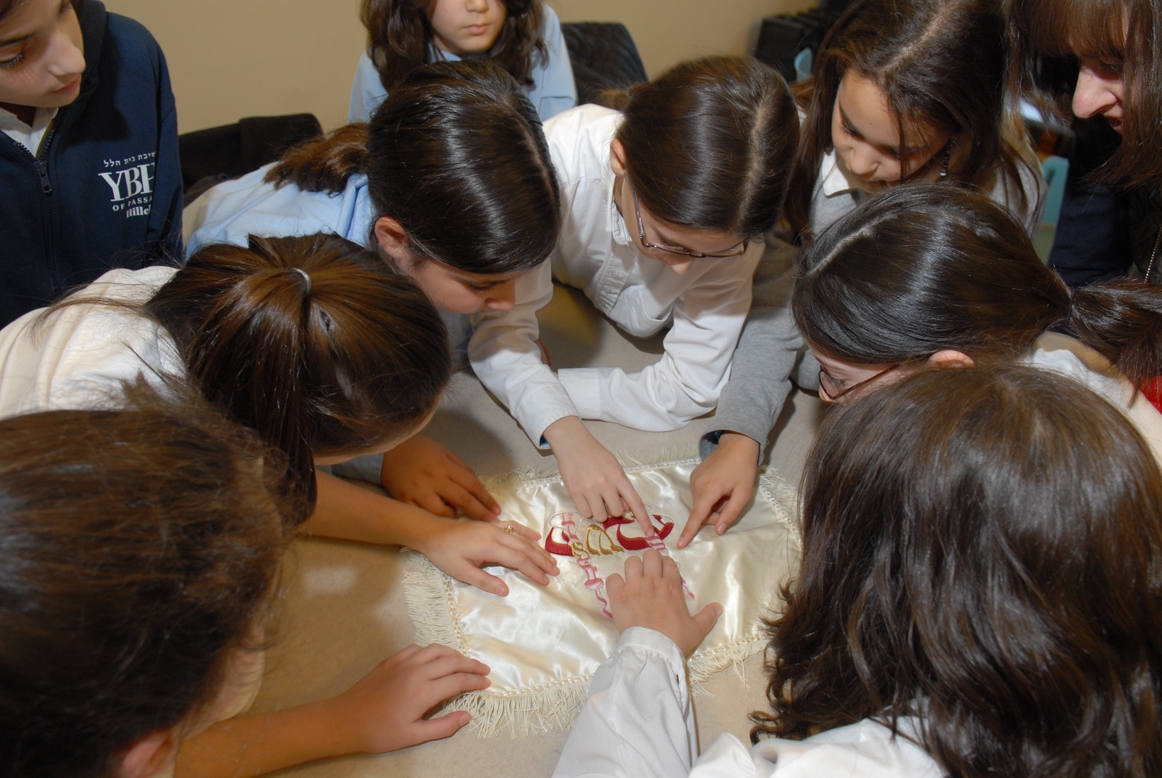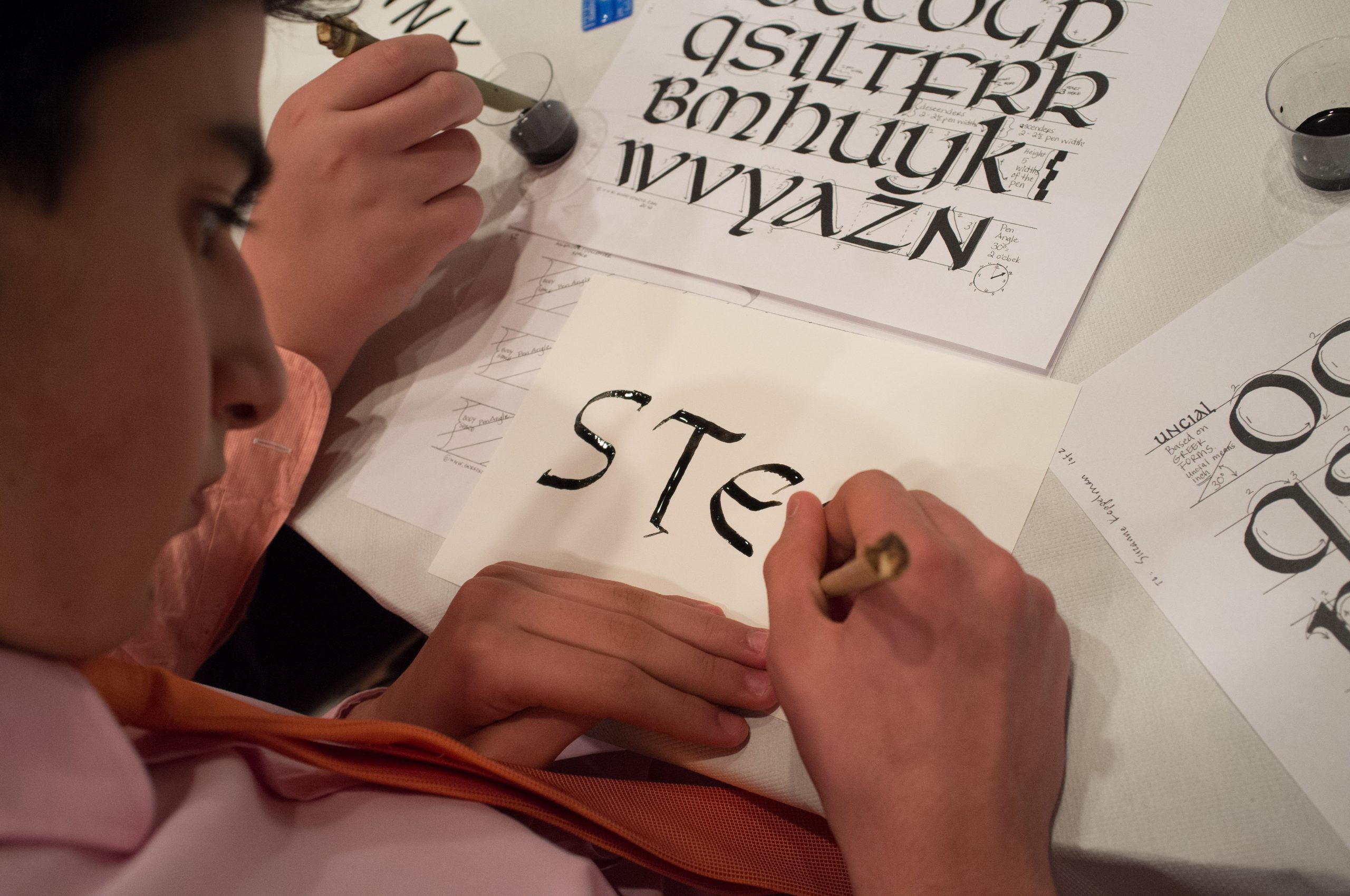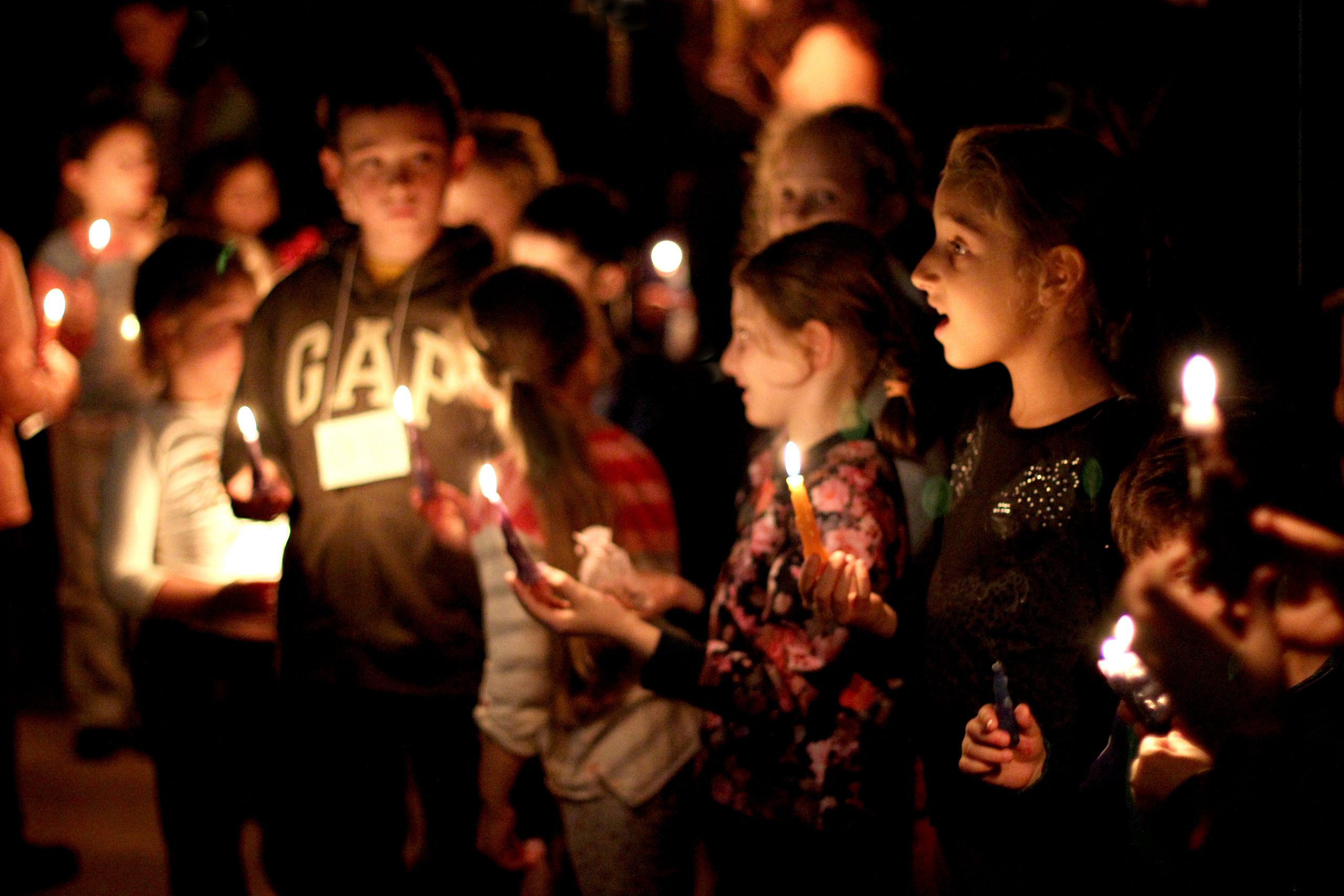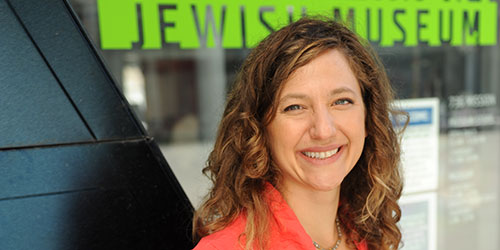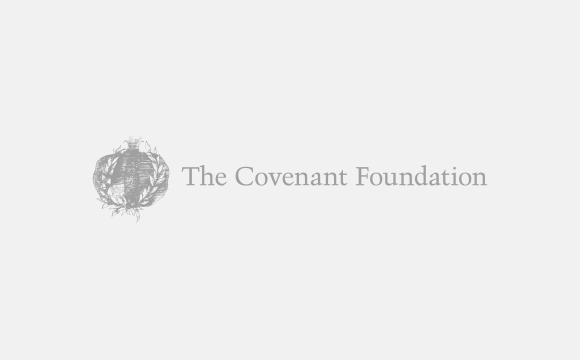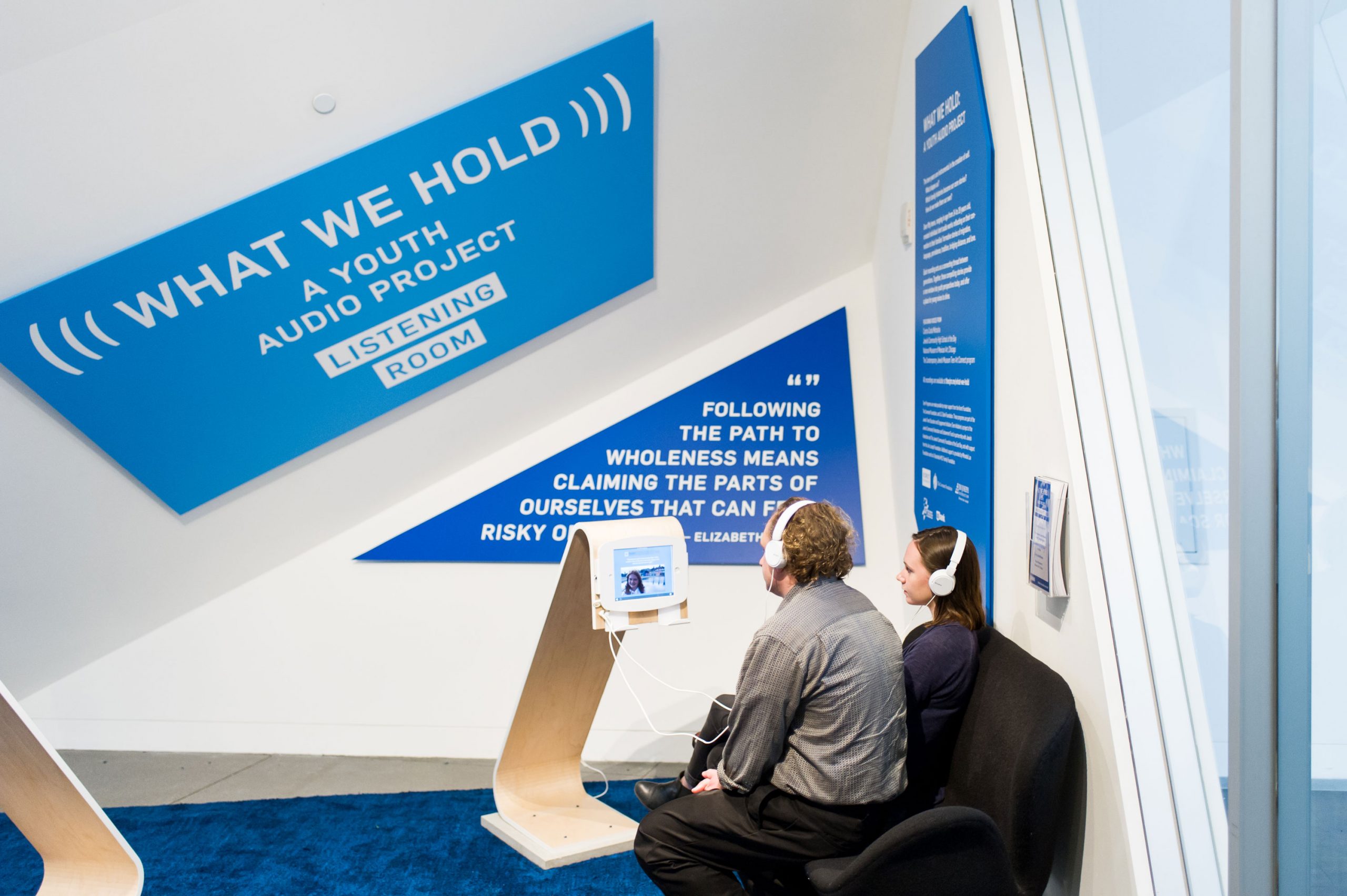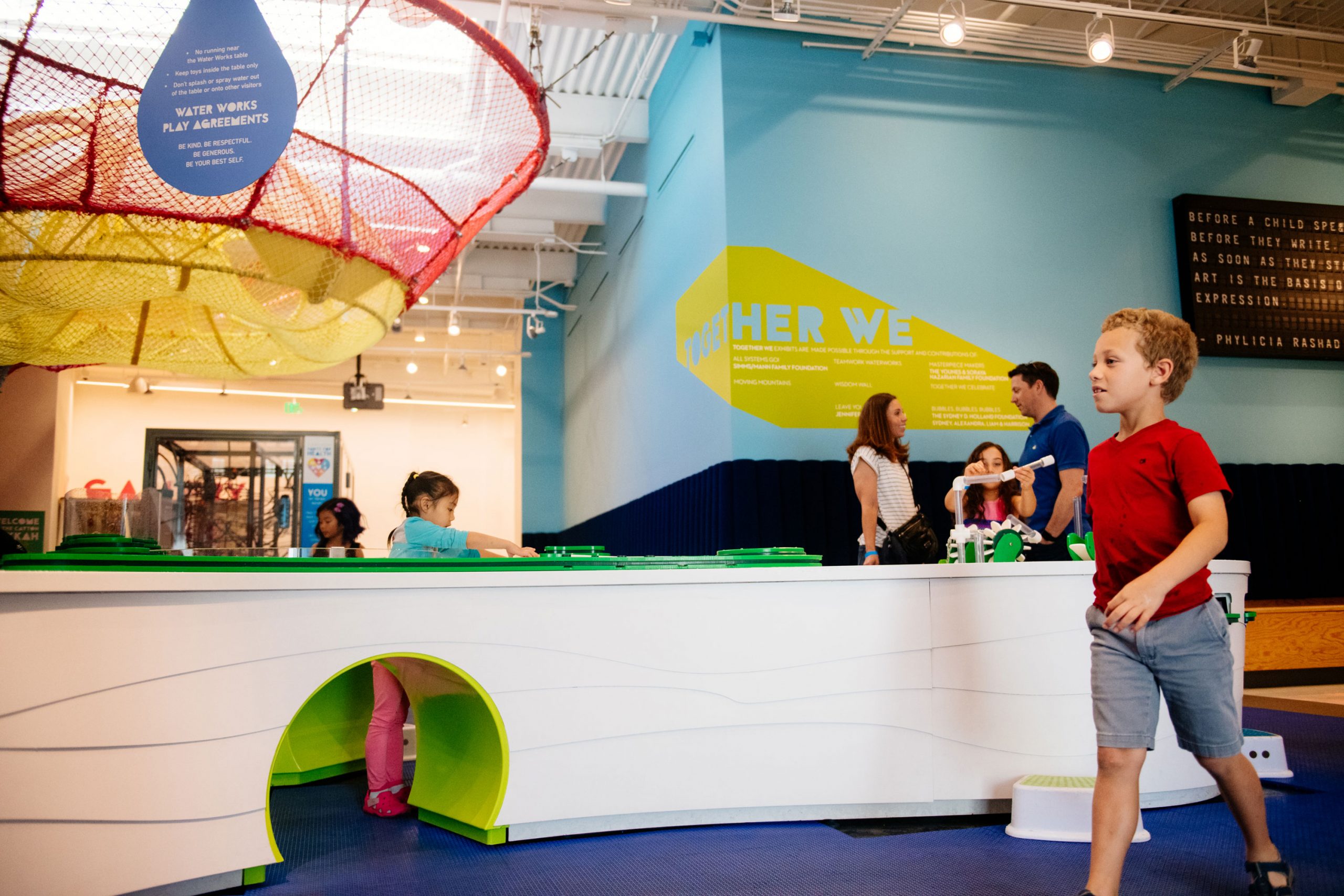Jewish Wisdom Becomes a Conversation Piece
At Hebrew Union College – Jewish Institute of Religion Museum here, an entire gallery is dedicated to video artist Hanan Harchol and a body of work three years in the making, yet inspired by a lifelong spirit of artful inquisitiveness and expression.
The nucleus of the exhibit – Jewish Food for Thought – is a series of short, black and white animated films depicting an Americanized and secular son in conversation and searching debate with his kibbutznik father – and sometimes his mother too – on issues central to the human experience but clearly addressed in Jewish teachings through the ages.
Repentance, forgiveness, gratitude, and envy are here, as are humility, faith, and love and fear. Heavy topics for sure, but powerfully distilled into animations reflecting a family dynamic always welcoming and endearing, oftentimes playful, many times emotional, and failingly insightful.
Framing the videos, which play on a continuous loop on a large screen in the gallery, are walls covered with super-sized storyboard tapestries – appearing to have been torn from the binder of an blown-up graphic novel – and Jewish text sources tied to the central themes. Nearby, 6-foot-tall black-and-white figurative expressionist paintings offer another take.
If the exhibit combines playful visuals with thought-provoking content, it’s all very purposeful, said Harchol, 43, a former professional musician who now teaches film and video at the High School of Art and Design in New York.
The objective, he said, is to show Jewish teachings and perspectives on such human issues in a very populist way, appealing to Jews across the spectrum of observance and educational settings and helping consumers of his content apply Jewish thought to everyday life.
“The medium is subversive. When someone watches or sees an animation or cartoon, they are set up to be disarmed. It is one step away from reality. But I can access people’s hearts and minds in a greater way when their guard is down. And I can really get at substantive subjects like these.”
The exhibit opened a nine-month run at the museum on Oct. 3, with funding by The Covenant Foundation. More than 400 people from throughout the arts and Jewish communities attended the opening, and the exhibit will travel to other venues across the country next year.
To Jewish scholars and those active in Jewish arts, the simple accessibility of Harchol’s body of work – and a viewer’s visual and emotional engagement with it – is key to its appeal and long-lasting effect.
“There are so many ways that Hanan’s work suggests that the medium is the message” said Rabbi Leon Morris of Temple Adas Israel in Sag Harbor, NY, who led a panel discussion, Making Jewish Wisdom Accessible Through Art, at the opening.
“You watch his stunning animations and listen to his textured and challenging scripts and he offers to his audience the idea of Torah as a conversation, as a dialogue. Through settings in a car, on a subway train or in the living room, he suggests a timeliness of Jewish wisdom, a contemporary relevance and urgency for what Jewish text can offer today. By framing the dialogue as a conversation between him and his father or mother, he suggests the ways our ancient wisdom is tied to the critical work of perpetuation.”
In the exhibit’s catalogue, curator Laura Kruger linked the art’s style, format and content into a “synergy (bringing) the teachings to life, while making them accessible and enabling the audience to more easily embrace these serious concepts.”
For Harchol, born in Israel but raised in the United States in a nearly non-observant household, the road to this exhibit began in 2009, when he participated in Projecting Freedom, a year-long initiative joining a group of video artists to study the Passover Haggadah. The project, supported by The Covenant Foundation and led by Rabbi Morris, required each participant to produce a video short reflecting a personal interpretation of one of the Haggadah’s parts.
The experience, he said, transformed his relationship to Judaism and to his art.
“It filled me with questions about how much my Jewish heritage had influenced how I was raised, how I behaved, how I thought, and even who I was as a person and an artist. What I discovered was a wealth of wisdom that was just sitting, waiting to be mined.”
To create the body of work on exhibit, Harchol tore through scores of books on Jewish thought, and studied with myriad scholars and rabbis as mentors and authorities.
On opening night, he stood to the side of the gallery to observe visitors as they absorbed and considered it all.
“What I hope to accomplish in the animations and my work in general is to contextualize these teachings within day-to-day dialogue, making them more accessible, and shine a light on how exceptionally helpful and relevant Jewish wisdom can be to our contemporary daily challenges.”
Hanan Harchol: Jewish Food for Thought, appears at Hebrew Union College – Jewish Institute of Religion, One West Fourth Street in New York, through June 27, 2014. More information: www.huc.edu/museums/ny
To view the catalogue in its entirety, visit: http://huc.edu/flipbook/hanan-harchol/
By H. Glenn Rosenkrantz, for The Covenant Foundation

